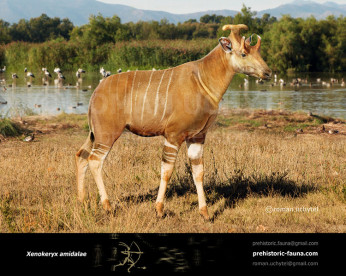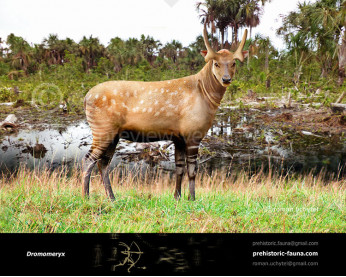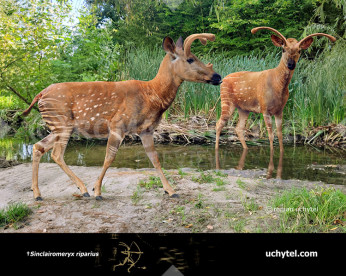Cranioceras
28642864
Cranioceras (†Cranioceras (Matthew, 1918))
Order: Artiodactyla
Family: †Palaeomerycidae
Temporal range: during the Miocene (North America ~23–5.3 Ma)
Dimensions: length - 1,4 - 1,8 m, height - 70- 90 сm, weight - 80 - 130 kg
A typical representative: †Cranioceras unicornis Matthew, 1918
Cranioceras is an extinct genus of endemic artiodactyl from the grassy plains of what is North America, during the Miocene epoch. This unusual deer-like creature had two straight horns above the eyes and a single curved horn on the back of its head.
Palaeomerycids such as Cranioceras continued to live in North American continent until the early Pliocene.
The Palaeomerycidae are an extinct family of ruminants in the order Artiodactyla. They lived in North America, Europe, Africa and Asia from 33 to 5 million years ago (from the Late Eocene to Pliocene epochs), existing for about 28 million years.
Payment
You may use multiple payment methods to buy image such as credit cards, PayPal and bank transfer.
Cranioceras (†Cranioceras (Matthew, 1918))
Order: Artiodactyla
Family: †Palaeomerycidae
Temporal range: during the Miocene (North America ~23–5.3 Ma)
Dimensions: length - 1,4 - 1,8 m, height - 70- 90 сm, weight - 80 - 130 kg
A typical representative: †Cranioceras unicornis Matthew, 1918
Cranioceras is an extinct genus of endemic artiodactyl from the grassy plains of what is North America, during the Miocene epoch. This unusual deer-like creature had two straight horns above the eyes and a single curved horn on the back of its head.
Palaeomerycids such as Cranioceras continued to live in North American continent until the early Pliocene.
The Palaeomerycidae are an extinct family of ruminants in the order Artiodactyla. They lived in North America, Europe, Africa and Asia from 33 to 5 million years ago (from the Late Eocene to Pliocene epochs), existing for about 28 million years.

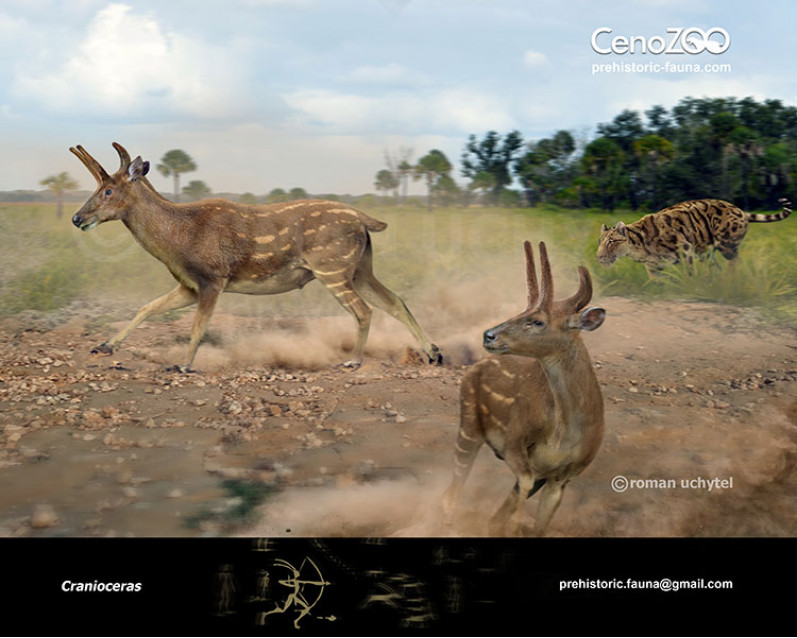
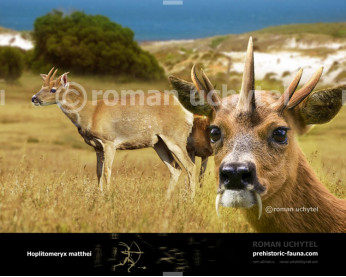
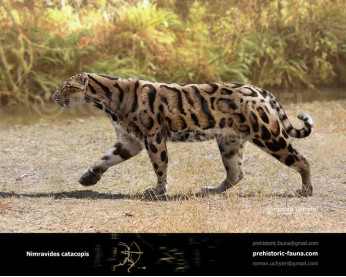
-346x277.jpg)
